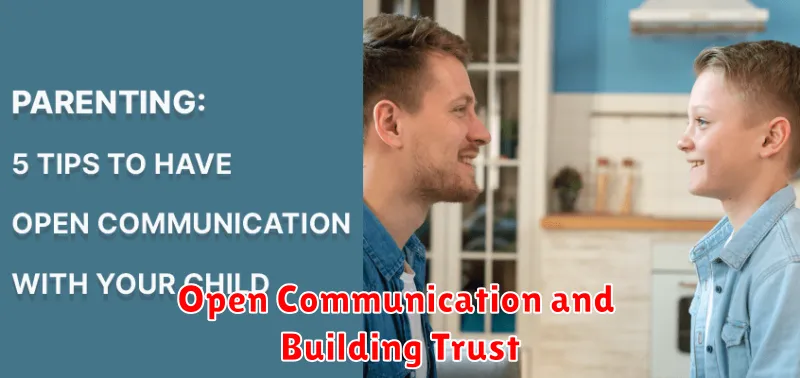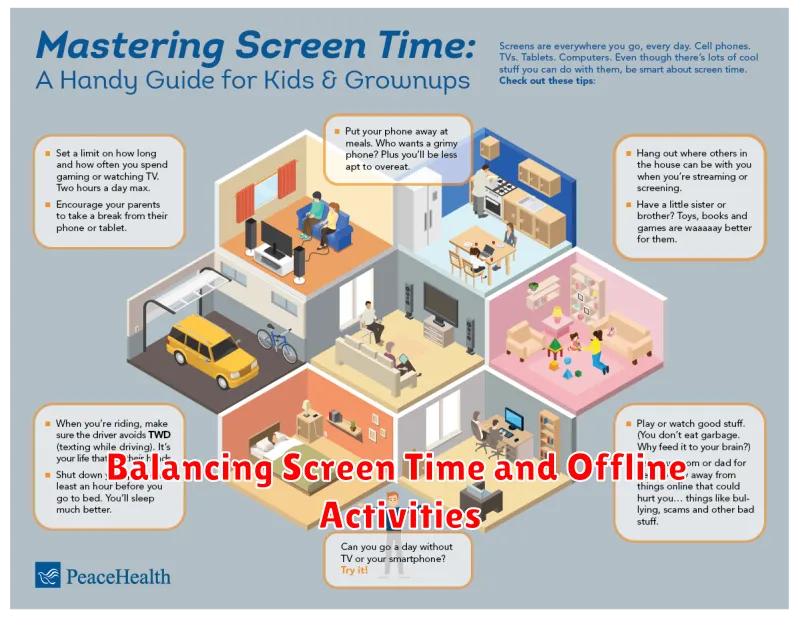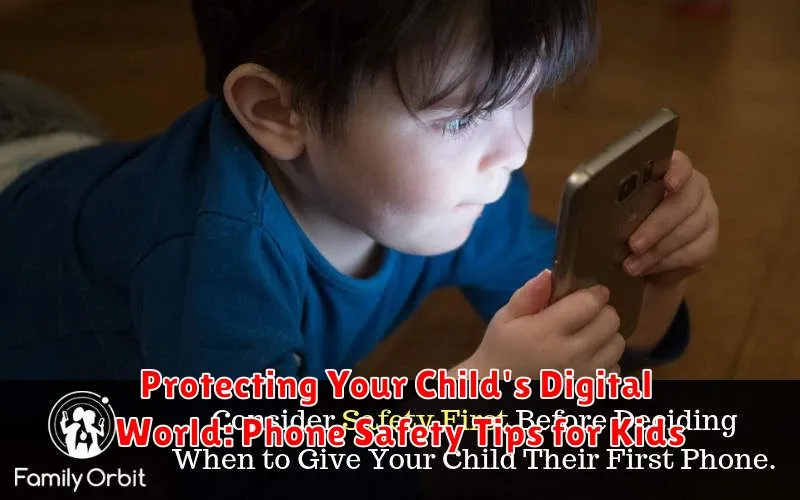In today’s interconnected world, children are increasingly exposed to the digital landscape at younger ages. Providing them with a safe and positive online experience is crucial for their development and well-being. Protecting your child’s digital world starts with understanding the potential risks and implementing effective phone safety tips. This article will guide you through essential strategies to help you navigate the complexities of raising kids in the digital age, focusing on phone safety for kids and providing a framework for online safety. We will explore age-appropriate guidelines, parental control options, and open communication techniques to empower your children to become responsible digital citizens. Addressing cyberbullying, online predators, and inappropriate content will also be key components of this discussion.
From establishing clear digital boundaries to monitoring app usage, we will provide practical advice and resources to help you create a safer online environment for your child. Understanding the importance of privacy settings, strong passwords, and responsible social media use is paramount. This article will equip you with the knowledge and tools necessary to engage in productive conversations with your child about online safety. By proactively addressing phone safety for kids, you can help them develop healthy online habits and minimize the potential risks associated with the digital world, fostering a balanced and secure online experience.
Setting Ground Rules for Phone Usage
Establishing clear guidelines for phone use is crucial for children’s safety and well-being. A family discussion involving your child can help them understand the reasons behind the rules and foster responsibility.
Time Limits: Set reasonable daily or weekly limits for recreational phone use. This helps prevent excessive screen time and encourages a healthy balance with other activities like homework, physical activity, and family time.
Designated “No Phone” Zones: Establish specific areas or times where phone use is prohibited, such as the dinner table, bedrooms after a certain hour, or during family outings. This encourages face-to-face interaction and better sleep hygiene.
Approved Apps and Content: Discuss and agree on which apps and types of content are permissible. Review age ratings and research apps before allowing your child to download them. Regularly check your child’s phone for any unapproved or inappropriate content.
Phone-Free Time Activities: Encourage participation in activities that don’t involve phones, like sports, hobbies, or creative projects. This reinforces the importance of a balanced lifestyle and helps children develop interests outside of the digital world.
Consequences for Rule Violations: Clearly outline the consequences of breaking the agreed-upon rules. These consequences should be age-appropriate and consistently enforced to ensure the rules are taken seriously.
Essential Privacy Settings for Kids’ Phones
Privacy settings are crucial for safeguarding your child’s personal information and online safety. Take the time to configure these settings properly.
Location Services
Review and restrict location services. Many apps request access to your child’s location. Limit access to only essential apps, and consider disabling location sharing entirely when not in use. Explain to your child why sharing their location constantly can be risky.
App Permissions
Carefully manage app permissions. Don’t grant apps access to the microphone, camera, or contacts unless absolutely necessary. Regularly review the permissions granted to installed apps and revoke any that are unnecessary or suspicious.
Social Media Privacy
If your child uses social media, configure their privacy settings to limit who can see their posts, photos, and personal information. Emphasize the importance of not sharing personal details like their address, phone number, or school name publicly.
In-App Purchases
Disable or restrict in-app purchases to prevent accidental spending. Many games and apps offer tempting virtual items that can quickly rack up charges.
Strong Passwords and Screen Lock
Ensure your child uses a strong, unique password or PIN to lock their phone. This prevents unauthorized access to their device and personal information.
Monitoring Apps and Online Activities
Actively monitoring your child’s app usage and online activities is crucial for their safety. While respecting their privacy, establish clear communication about your oversight. Utilize available tools and features to understand their digital engagement.
App Usage Tracking: Most phones offer built-in features or parental control apps that provide insights into app usage. These tools can reveal how much time your child spends on each app and which apps they are using most frequently. This information helps identify potential addictive behaviors or excessive screen time.
Web Browsing History: Reviewing browsing history can offer valuable clues about your child’s interests and potential exposure to inappropriate content. While some level of privacy is important, open discussions about responsible online behavior can mitigate risks. Be aware that children may attempt to use incognito mode or delete history, highlighting the importance of trust and communication.
Social Media Monitoring: If your child uses social media, discuss the importance of responsible online interactions. Regularly check their privacy settings and friend lists. Encourage them to report any cyberbullying or inappropriate content they encounter.
Cyberbullying Prevention and Response
Cyberbullying, a form of bullying that takes place online, can have devastating effects on a child’s emotional well-being. Open communication is crucial. Encourage your child to talk to you if they experience or witness cyberbullying.
Teach your child to never respond to cyberbullying messages. Responding often fuels the bully’s behavior. Instead, they should save the evidence by taking screenshots or saving messages. This documentation can be crucial when addressing the issue with school officials or online platforms.
Blocking the bully on all platforms is an essential step in protecting your child. Explain to your child that this isn’t a sign of weakness, but a way to take control of the situation and protect their mental health. Report the cyberbullying to the relevant social media platform or online game where it occurred. Most platforms have clear policies against cyberbullying and mechanisms for reporting it.
If the cyberbullying involves threats, harassment, or sharing of private information, contact law enforcement. Cyberbullying can have serious legal consequences, and involving the authorities is sometimes necessary.
Emphasize the importance of empathy and kindness online. Teach your child to be an upstander, someone who intervenes or speaks out against cyberbullying when they witness it. Encourage them to support their friends and peers who might be targets of online harassment.
Educating Kids about Online Risks and Dangers
A crucial aspect of phone safety involves educating your children about potential online dangers. Open communication is key. Encourage your child to talk to you about anything they encounter online that makes them uncomfortable.
Explain the concept of strangers online. Emphasize that not everyone online is who they say they are. Discourage sharing personal information like addresses, phone numbers, and school names with people they’ve only met online.
Discuss the permanence of online content. Inform them that what they post online can stay there indefinitely and may have consequences in the future. This includes photos, videos, and comments.
Address the dangers of inappropriate content. Explain that they may encounter content that is upsetting, disturbing, or inappropriate. Instruct them to tell you if they come across such content.
Talk about scams and phishing attempts. Educate them about online scams that try to trick people into giving away personal information or money. Warn them against clicking suspicious links or downloading unknown files.
Age-Appropriate Apps and Content Filtering
Choosing age-appropriate apps is crucial for your child’s online safety. Before downloading any app, carefully review its age rating, privacy policy, and user reviews. Look for apps designed specifically for children, often labeled as “kid-friendly” or “educational.” These apps typically offer curated content and enhanced privacy features.
Content filtering tools offer an additional layer of protection. These tools can block access to inappropriate websites, restrict certain types of content (like violent games or adult themes), and even manage in-app purchases. Many internet service providers and mobile carriers offer built-in content filtering options. You can also explore dedicated filtering apps and software for more granular control.
Consider establishing family media agreements that outline acceptable app usage and online behavior. This can foster open communication and help your child understand the importance of responsible digital habits. Regularly review and update these agreements as your child grows and their online needs evolve.
Actively monitor the apps your child uses and stay informed about new trends in the digital landscape. Encourage your child to ask questions and discuss their online experiences with you.
Open Communication and Building Trust

Fostering open communication with your child is paramount to their online safety. Create a safe space where they feel comfortable discussing their online experiences, both positive and negative. Encourage them to share any concerns they have, whether it’s cyberbullying, inappropriate content, or interactions with strangers.
Emphasize that they can come to you without fear of judgment or punishment. This trust is crucial. Children who fear repercussions are less likely to report problems, potentially escalating a situation. Clearly explain the potential risks of online interactions and empower them to make informed decisions.
Actively participate in their digital world. Ask about the apps they use, the games they play, and who they interact with online. Show genuine interest in their online activities. This involvement not only helps you understand their digital landscape but also strengthens your connection and builds a foundation of trust.
Regularly revisit and reinforce these conversations. The digital world is constantly evolving, and ongoing communication is essential for maintaining a safe and healthy online experience for your child.
Emergency Procedures and Contact Information
Equipping your child with the knowledge and tools to handle emergencies is crucial in today’s digital age. Ensure they understand how to use their phone to contact emergency services and important family members.
Emergency Contacts
Program key emergency contacts into your child’s phone. This should include family members, close friends, and essential services like 911. Make sure your child understands who to call in different situations. Consider creating an “ICE” (In Case of Emergency) contact entry for easy identification by first responders.
Teaching Emergency Procedures
Discuss with your child the importance of staying calm in an emergency. Walk them through how to dial 911, providing clear and concise information to the operator. Explain the importance of sharing their location and staying on the line until help arrives.
Location Services
Familiarize your child with location services and ensure they are enabled on their phone. Explain how these services can help emergency responders locate them quickly if needed. Address any privacy concerns they may have about location sharing.
Balancing Screen Time and Offline Activities

In today’s digital age, finding a healthy balance between online and offline activities is crucial for a child’s development. Excessive screen time can negatively impact sleep, physical activity, and social skills. Establishing clear limits is essential.
Create a structured “screen time budget”. This involves allocating specific time slots for phone usage and sticking to them. For example, allow phone use after homework is completed, or for a set period on weekends.
Encourage participation in offline activities. This could include sports, hobbies, reading, or family time. Make these activities engaging and rewarding to offer healthy alternatives to screen time.
Lead by example. Children often model their behavior after adults. Be mindful of your own screen time habits and demonstrate a healthy balance.
Weekends and school holidays can present unique challenges. Establish different screen time rules for these periods, perhaps allowing for slightly increased usage while still maintaining reasonable boundaries.

